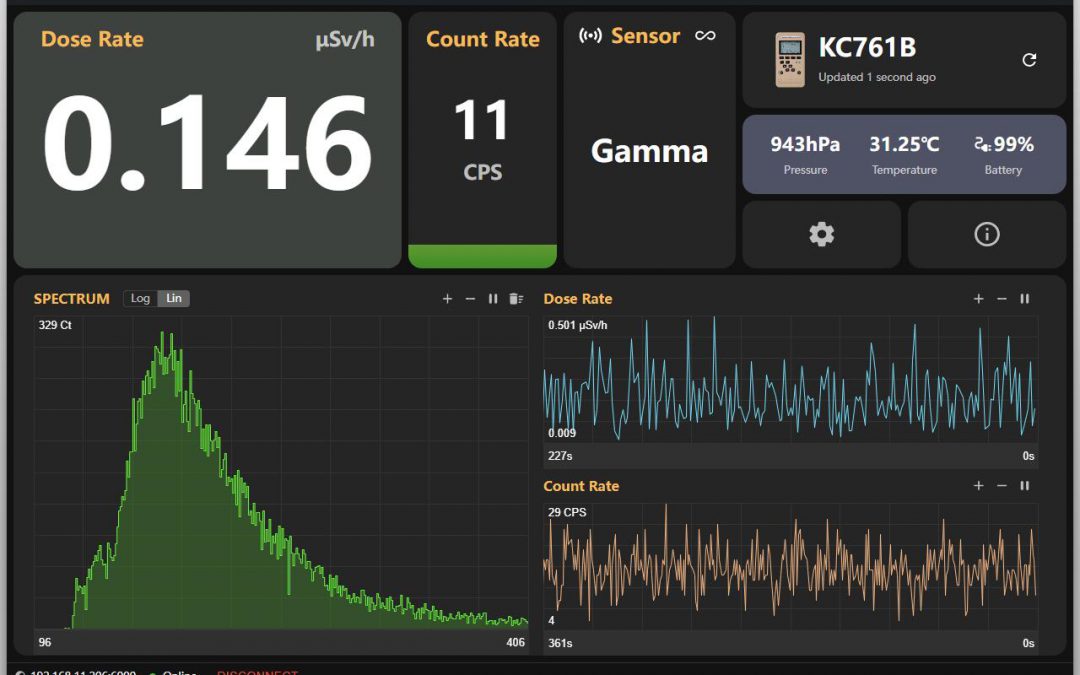
(KC761 Gamma Spectrometer PC software in develop version)
Due to the natural rise and fall of counting events, random fluctuations from 4 cps to 29 cps are normal on the scale of “seconds”. If a few cosmic rays happen to come at a high cps, a larger dose equivalent rate is obtained after energy compensation, and the fluctuation of the dose equivalent rate covers the range of 0.009 to 0.501 μSv/h, which is larger than cps fluctuations.
Instead of showing the user the raw data on a second scale, most radiation detectors perform a long term average, usually up to 3 minutes, thus losing time resolution – but they still refresh every second, giving the illusion of real time data. The averaging function is turned off when slightly larger radiation is detected, for example more than 1 μSv/h.
So you will notice that most instruments approaching the radiation source are not immediately and slowly increase their readings, but at some point suddenly jump to a large reading and then the alarm goes on. To solve this problem, many instruments have added a “search mode” to display real-time values.
The good thing with average is that the user always sees a very stable reading in the background state. The downside is that users will assume that the background is this stable and even blame our equipment for being faulty. Public users, in particular, freak out when they see readings above 0.3μSV. No matter how to appease, anyway, it is the equipment has a problem, you see other people’s is very stable, why do your instrument not have this level? and other brand have a search function, why don’t your have it?
In our opinion, as an instrument, the most important thing is to reflect the objective conditions it perceives. But the pressure was on and we had to modify our product design. Since the display is already overcrowded on KC761, it will only show the post-smoothing value use a dynamic smoothing window length. And the PC software display area is sufficient to provide both pre-smoothing and post-smoothing readings.

